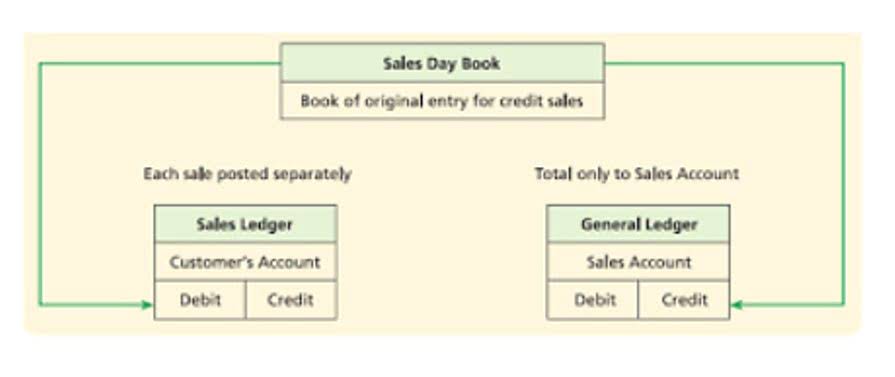Content

The income statement with the help of vertical analysis has helped understand that the company has performed well as compared to previous year. In Horizontal Financial Analysis, the comparison is made between an item of financial statement, with that of the base year’s corresponding item. On the other hand, in vertical financial analysis, an item of the financial statement is compared with the common item of the same accounting period.

Because this analysis tells these business owners where they stand in their financial environment. Dummies has always stood for taking on complex concepts and making them easy to understand. Dummies helps everyone be more knowledgeable and confident in applying what they know.
Horizontal Company Financial Statement Analysis
To isolate the reason for the net income decline, look at the change in total dollars, as well as the percentage change. But note that the dollar amount of change is only $1,650 ($4,150 to $5,800). As an investor, you should be digging into a company’s financial statements. Vertical Analysis is particularly useful when used as part of a ratio trend analysis to identify relative changes over a period of time. Vertical analysis makes it easy to identify the relative size of the components of a financial statement and their total size. As a result, a company could use this information to establish minimum and maximum limits for individual line items. In contrast, horizontal analysis looks at line items by how they have changed over a period of time.
- Vertical analysis, horizontal analysis and financial ratios are part of financial statement analysis.
- For example, if vertical analysis is used on an income statement, gross sales would be the base figure and all other line items a percentage of total sales.
- Year 1 Year 2 Year 3Sales 100%100%100%COGS30%29%40%Gross Profit70%71%60%Marketing 5%5%10%In the above table, we see that COGS for the company spiked in year three.
- For example, if you’re using vertical analysis with a balance sheet to analyze your assets, your base amount would be your total assets, with each individual item given a percentage in the next column.
- Figure shows a hypothetical balance sheet of Annapurna Textile Inc. as on June 2018.
- On an income statement you conduct vertical analysis by converting each line into a percentage of gross revenue.
Whereas a low percentage rate compared to the average for the industry usually indicates an efficient use of Assets. Likewise, a high percentage rate indicates the need to improve the use of Assets. For example, using financial ratios can be helpful in determining costs or identifying changes in processes to increase savings. Thereby, achieving a goal of the budgeting process to determine the firm’s game plan. This ratio is a measure of the ability of a firm to turn Inventory into Sales.
Methods of Analyzing a Financial Statement
For the current year, they suddenly jump to say 50%; this is something that management should check. Where it helps to understand the structural composition of the various components like cost, expenses, assets, and liabilities. Fixed AssetsFixed assets are assets that are held for the long term and are not expected to https://www.bookstime.com/ be converted into cash in a short period of time. Plant and machinery, land and buildings, furniture, computers, copyright, and vehicles are all examples. By looking at the balance sheet, you can see that the majority of your company’s assets are current, with only 25% of assets considered fixed, or long-term assets.
- A vertical analysis is also the most effective way to compare a company’s financial statement to industry averages.
- Cost Of Goods SoldThe Cost of Goods Sold is the cumulative total of direct costs incurred for the goods or services sold, including direct expenses like raw material, direct labour cost and other direct costs.
- For instance, in the year 2015, organization A had 4 million turnover as compared to year the 2014 whereby the turnover was 2 million.
- This means that instead of recording dollar amounts, they would put percentages, such as 130, 125, 115, 120, and 100.
Vertical analysis can also be used to spot trends over a specific period of time. A common size financial statement allows for easy analysis between companies or between periods for a company. It displays all items as percentages of a common base figure rather than as absolute numerical figures. Financial statements that include vertical analysis clearly show line item percentages in a separate column. Using percentages to perform these financial analytics and comparisons makes the data you gather more meaningful and easier to understand. Therefore, common size financial statement not only helps in intra-firm comparison but it also helps in inter-firm comparison. A vertical analysis of financial statements often reports the percentage of each line item to a total amount.
What Is DeFi? How Will Decentralized Finance Impact Your Industry
The changes may be expressed in absolute amounts or percentages (Smart, Megginson, & Gitman, 2007). The data may be presented for two years or for a number of successive years so as to examine the trend. A good way to do some ratio and trend analysis work is to prepare both horizontal and vertical analyses of the income statement. Both analyses involve comparing income statement accounts to each other in dollars and in percentages. It involves identifying the co-relation of items relating to a company’s financial information and how they affect the overall performance of an organization. For instance, vertical analysis can be used in the determination of cost of goods in relation to the organization’s total assets.
- Whereas vertical analysis allows accountants to use common measurements to compare and contrast amounts that are of varying magnitudes in an effective way.
- This method of analysis helps to identify correlations between line items and how they impact overall performance.
- The same process applied to ABC Company’s balance sheet would likely reveal further insights into how the company is structured and how that structure is changing over time.
- To complete a vertical analysis for your balance sheet, you’ll need to perform this calculation for each line item that is currently listed on your balance sheet.
- Plant and machinery, land and buildings, furniture, computers, copyright, and vehicles are all examples.
- But this method is not useful to make firm decisions, and the measurement of the company value cannot be defined.
For instance, a large increase in Sales returns and allowances coupled with a decrease in Sales over two years would be cause for concern. If this is the case, you need to address and solve the problem or the company’s reputation and future may be at stake. In general, an analysis of Financial Statements is vital for a person running a business.
Financial Accounting
Calculate the absolute change by deducting amount of base year from the amount of comparing year. This high percentage means most of your Assets are liquid, and it may be time to either invest that money or use it to purchase additional Plant Assets. In our sample Balance Sheet, we want to determine the percentage or portion a line item is of the entire category.
Again, keep in mind that these examples only become an issue if they occur consistently over several accounting periods, which is why it’s so important to perform vertical analysis regularly. Remember, on a balance sheet, your base number is always your total assets and total liabilities, and equity. Financial statement analysis is the process of analyzing a company’s financial statements for decision-making purposes. However, it is important to remember that you can still use vertical analysis to compare a line item’s percentages from one quarter or year to another.
What is the benefit of vertical analysis?
Advantages of Vertical Analysis
Vertical analysis simplifies the correlation between single items on a balance sheet and the bottom line, as they are expressed in a percentage. A company's management can use the percentages to set goals and threshold limits.
To prepare a vertical analysis, you select an account of interest and express other balance sheet accounts as a percentage. For example, you may show merchandise inventory or accounts receivable as a percentage of total assets.
CFO Service, Finance & Accounting
In the above vertical analysis example, we can see that the income decreases from 1st year to 2nd year, and the income increases to 18% in the 3rd year. So by using this method, it is easy to understand the net profit as it is easy to compare between the years. We can easily understand that the total expenses gradually increased from 43% to 52%, and the net income get reduced from 1st year to 2nd year. In the 3rd year, the COGS decreased compared to the previous years, and the income increased. Analysis of the balance sheet can take many forms, with vertical analysis just one of them. Vertical analysis can provide business owners and CFOs with valuable information, particularly when used with additional financial ratio analysis.
How is liquidity ratio calculated?
- Current Ratio = Current Assets / Current Liabilities.
- Quick Ratio = (Cash + Accounts Receivables + Marketable Securities) / Current Liabilities.
- Cash Ratio = (Cash + Marketable Securities) / Current Liabilities.
That means the variable expenses in the balance sheet of year 2 and 3 are shown as a percentage of variable expenses of year 1. Let us assume that variable expenses on year 1, 2, and 3 were $151, $147, and $142 respectively.
What is Vertical Analysis Formula?
With financial analysis, investment alternatives can be reviewed to judge the earning potential of the enterprise. Another objective is to examine the present profitability and operational efficiency of the enterprise to determine the financial health of the company.
With it, the company can assess its profitability and operational efficiency while also looking at what has been driving the company’s performance. Horizontal analysis can be performed by comparing a recent year against the base year while identifying the growth trends between the time periods. The analysis can be performed in any four types of financial statement i.e. income statement, balance sheet, statement of cash flow, and statement of changes in equity. However, income statement and balance sheet are mostly used financial statement to do horizontal analysis . The comparison of an item on a financial statement with a different item on the same statement.
Let us understand this analysis with the help of the following balance sheet. To calculate 2014, we DO NOT go back to the baseline to do the calculations; instead, 2013 becomes the new baseline so that we can see percentage growth from year-to-year.

This means that instead of recording dollar amounts, they would put percentages, such as 130, 125, 115, 120, and 100. Most commonly, this will take the form of percentage changes from the base year. Every finance department knows how tedious building a budget and forecast can be. Integrating cash flow forecasts with real-time data and up-to-date budgets is a powerful tool that makes forecasting cash easier, more efficient, and shifts the focus to cash analytics.
A closer look into vertical analysis in fig shows the distribution pattern of liabilities among current liabilities, long — terms liabilities and equity capital. Similarly, it shows the distribution pattern of total asserts among current asserts, fixed assets and other asserts. The balance sheet uses this presentation on individual items like cash or a group of items like current assets.

The vertical analysis also shows that in years one and two, the company’s product cost 30% and 29% of sales, respectively, to produce. First, we can see that the company’s marketing expenses increased not just in dollar terms, but also as a percentage of sales. This implies that the new money invested in marketing was not as effective in driving sales growth as in prior years.
Vertical AnalysisExplained & Defined
Vertical analysis enables accountants to create common-size measures, which enable them to compare and contrast amounts of different magnitudes in a very efficient manner. It is a relatively more potent tool than horizontal analysis, which shows the corresponding changes in the finances of a particular unit/ account/department over a certain period of time. Income statement, every line item is stated in terms of the percentage of gross sales. This information suggests that the company didn’t do as well at selling jeans, purses and shoes in year two as it did in year one.